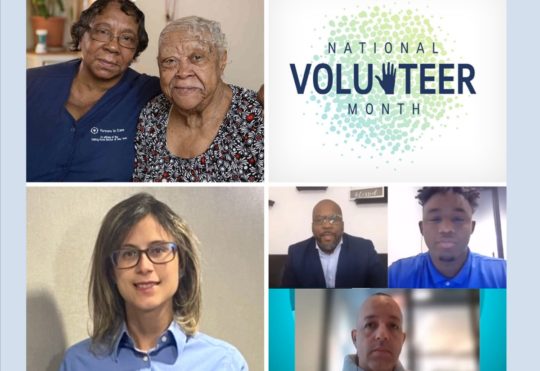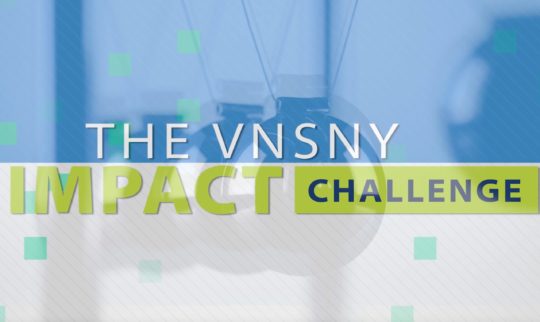New York’s NORCs: A “Lifeline” Connecting At-Risk Seniors to Care
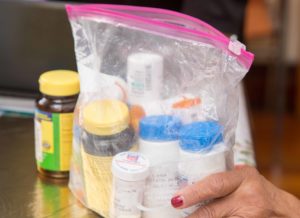 Imagine being a senior living alone during the coronavirus pandemic, in your 80s, 90s, or even older, mostly homebound, needing medication refills or perhaps battling symptoms of illness—all while trying to reach a primary care physician whose office may be closed, or seeking healthcare information in your own language about COVID-19 or chronic conditions such as hypertension and diabetes.
Imagine being a senior living alone during the coronavirus pandemic, in your 80s, 90s, or even older, mostly homebound, needing medication refills or perhaps battling symptoms of illness—all while trying to reach a primary care physician whose office may be closed, or seeking healthcare information in your own language about COVID-19 or chronic conditions such as hypertension and diabetes.
This is where VNSNY/Partners in Care nurses and other clinicians in the NORC program (Naturally Occurring Retirement Community) come in. This program identifies communities with large senior populations, then provides them with clinicians who attend to these seniors’ needs. The NORC teams connect vulnerable, often isolated seniors to the care they need, speaking with their physicians, advocating for their health and safety, helping them access needed medications, and bringing them trusted information on the coronavirus and other health conditions that they live with every day.
 Embedded in building complexes or neighborhoods where multitudes of seniors live, VNSNY provides nursing services to 27 New York City Department for the Aging-funded NORCs, making VNSNY the largest NORC provider in the city. From July 1, 2019 through the end of March 2020, VNSNY provided more than 12,612 hours of nursing services to seniors in these programs, which serve all ethnicities across lower- and middle-income communities, including seniors living in New York City public housing.
Embedded in building complexes or neighborhoods where multitudes of seniors live, VNSNY provides nursing services to 27 New York City Department for the Aging-funded NORCs, making VNSNY the largest NORC provider in the city. From July 1, 2019 through the end of March 2020, VNSNY provided more than 12,612 hours of nursing services to seniors in these programs, which serve all ethnicities across lower- and middle-income communities, including seniors living in New York City public housing.
VNSNY’s NORC nurses fill a unique role in health care—one that bridges public health and one-on-one care. Their life-saving impact has been amplified during this pandemic, when educating at-risk seniors about coronavirus prevention and treatment is more important than ever—as is helping them successfully manage chronic illnesses at home, so they can avoid unnecessary visits to hospitals crowded with COVID-19 patients.
 “Our VNSNY/Partners in Care NORC nurses are doing a great job in helping people to stay calm and manage their health at home,” says Rhonda Soberman, Manager of Program Development. “They are definitely heroes.”
“Our VNSNY/Partners in Care NORC nurses are doing a great job in helping people to stay calm and manage their health at home,” says Rhonda Soberman, Manager of Program Development. “They are definitely heroes.”
As a clinician in the Chinatown NNORC (Neighborhood Naturally Occurring Retirement Community), VNSNY nurse Xiang Jin reaches out to frail elderly residents in walk-up buildings who are typically living with many chronic illnesses and facing language and literacy barriers. As the pandemic hit the U.S., he began contacting NNORC members as early as February, asking if they’d recently traveled to China and if they’d had any contact with family members who had traveled.
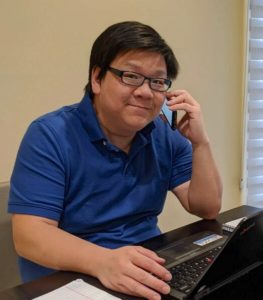 “I explain everything about COVID-19 to them,” says Xiang, who speaks Cantonese and Mandarin as well as English. “I discuss how the disease is transmitted, how to prevent it, how to fit and wear the face masks, how to do proper hand-washing, and what to do if they experience any COVID-19 symptoms.”
“I explain everything about COVID-19 to them,” says Xiang, who speaks Cantonese and Mandarin as well as English. “I discuss how the disease is transmitted, how to prevent it, how to fit and wear the face masks, how to do proper hand-washing, and what to do if they experience any COVID-19 symptoms.”
Noting that Asians have a relatively low rate of infection in New York City, Xiang adds, “I am happy for my role at this moment because my clients really need me. Otherwise they have no access to trusted information. Many don’t have smart phones and may not be able to read newspapers. By giving them accurate and relevant information, we’re helping to lower the infection rate in the Chinese American population. I’m not only teaching members, they can also go on and teach their families.”
The NORC program is popular and growing—the city added five new NORCS just last year—and currently serves 11,000 elderly residents. This was the first fiscal year that the NORC nursing service program received funding from the New York City Council, thanks in large part to the Council’s Finance Chair Danny Dromm and Aging Chair Margaret Chin.
Working closely with the social service organization that operates the NORC program, NORC nurses and social workers work collaboratively as part of an interdisciplinary team, to address client needs. The nurses perform individual healthcare assessments and tailor medical solutions that could include direct care nursing, physical or occupational therapy, wound care, or other medical interventions. They focus on client health goals through the provision of health care assessments, screenings, education, health promotion and linkage to care. NORC social workers, provide counseling services and connect the clients to community resources including government entitlements and other supportive services that enhance successful community living.
NORC nurses speak with clients’ primary care physicians to make sure patients can translate the plan of care from the doctor’s office into their daily life at home. From an onsite office, NORC nurses also hold health information sessions on topics relevant to seniors, including blood pressure clinics, with educational resources printed in several different languages.
Continuing to Provide Vital Care During the COVID-19 Pandemic
NORC nurses currently work remotely because of the pandemic but they are committed to being available to their clients, making proactive phone calls to check in and share coronavirus and other health information. They also answer clients’ incoming calls on all manner of questions or concerns, and hold group discussions online or telephonically, working hard to overcome the challenges that technology can present in an over-80 population.
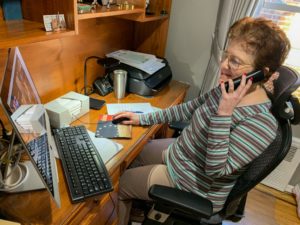 For her clients, who are in their 90s and 100s and live across five buildings near Coney Island, VNSNY NORC nurse Abby Gordon recently started a women’s group, which meets regularly by telephone conference call to discuss health issues from sleeplessness, anxiety and depression to cataracts. “I give them information, then they speak to one another about their own experiences,” says Abby, who has been a nurse since 1970 with a varied background in emergency room and hospice care. “I stay in the background and let them talk and support each other. When you’re 95 or 100 years old, you have a lot of stories to share.”
For her clients, who are in their 90s and 100s and live across five buildings near Coney Island, VNSNY NORC nurse Abby Gordon recently started a women’s group, which meets regularly by telephone conference call to discuss health issues from sleeplessness, anxiety and depression to cataracts. “I give them information, then they speak to one another about their own experiences,” says Abby, who has been a nurse since 1970 with a varied background in emergency room and hospice care. “I stay in the background and let them talk and support each other. When you’re 95 or 100 years old, you have a lot of stories to share.”
The health information that these gatherings provide is important, but equally important is the socialization itself—a powerful salve for older people who have been quarantined alone behind closed doors for many weeks. “When the hour ended, they were able to tell each other how much they missed each other,” says Abby. “That was very meaningful.”
In all their teaching and support activities, NORC nurses empower seniors to become partners in their own care—a critical element to successful aging in place. Before the pandemic, Nicole Alvarez, a VNSNY Partners in Care NORC nurse who works in the Bronx and Manhattan’s Lower East Side, where many residents speak Spanish, educated her clients to use the health equipment they have at home, such as blood pressure monitors and pulse oximeters. Now, in times of social distancing, they can monitor their own vital signs and help her assess their health over the phone.
 “I can ask them if they checked their blood pressure this morning, or their blood glucose,” says Nicole, adding that she speaks with many clients in their native Spanish, which puts them at ease and expands their access to care. “Together, we can have a better picture of what’s going on. This is also helpful when they go see their physician. They can take that record with them and look, for example, at how their medication might be affecting their blood pressure.”
“I can ask them if they checked their blood pressure this morning, or their blood glucose,” says Nicole, adding that she speaks with many clients in their native Spanish, which puts them at ease and expands their access to care. “Together, we can have a better picture of what’s going on. This is also helpful when they go see their physician. They can take that record with them and look, for example, at how their medication might be affecting their blood pressure.”
Since the pandemic, NORC nurse Dana Evans, who works in mid-town Manhattan, says she has been busier than ever, with doctor’s offices difficult to reach and clients looking for answers to questions about both the coronavirus and other conditions. She recently spoke with a client who could not reach his doctor. At first, he told Dana not to bother trying, but she convinced him to let her make the call. She was able to reach the physician, and help the client get his questions answered.
“This was someone who could have lost his connection to care, but I kept that connection by talking to him and asking that one additional question,” says Dana, who has a background in public health and has worked as a nurse in many different settings. “If we aren’t there for them and these seniors have a health crisis, it’s like going overboard without a lifeline. If no one answers the phone, that would ratchet up their anxiety a thousand-fold.”
As we reimagine what comes next for our seniors who want to successfully age in place, we can look at the NORC program as a valuable model of care. The NORCs have been successful by making critical nursing and social service resources available to vulnerable communities of seniors as they strive to maintain their independence at home. “We listen, engage with them, and connect them to solutions that optimize their health,” says Dana. “That’s the value of what we do every single day.”
